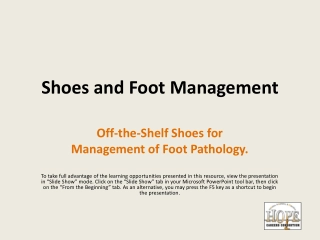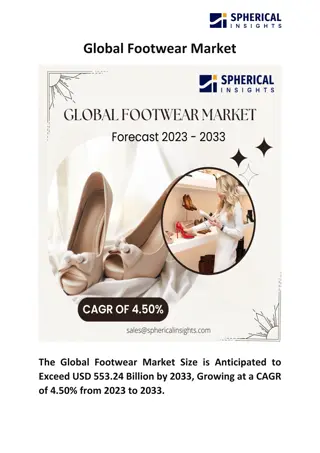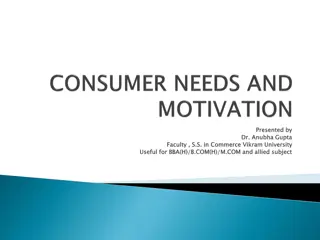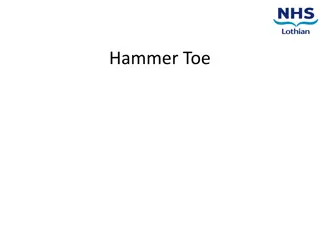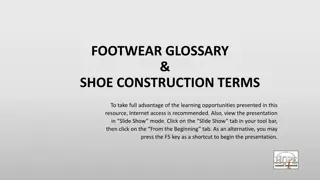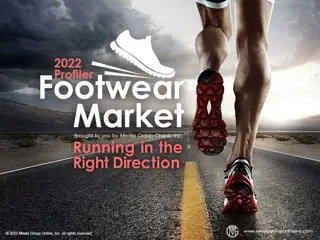Footwear Industry Trends and Consumer Behavior Insights
The footwear industry saw mixed performance in 2017 and found its stride in the first half of 2018. Athletic footwear sales played a crucial role in offsetting the overall decline in retail sales. The rise of casual athletic footwear, driven by workplace trends and changing consumer preferences, is shaping the market. Price and special offers appear to be more influential in attracting footwear buyers than product quality. Market data suggests a shift in consumer demographics, with brands like Nike adapting to cater to evolving preferences.
Download Presentation

Please find below an Image/Link to download the presentation.
The content on the website is provided AS IS for your information and personal use only. It may not be sold, licensed, or shared on other websites without obtaining consent from the author.If you encounter any issues during the download, it is possible that the publisher has removed the file from their server.
You are allowed to download the files provided on this website for personal or commercial use, subject to the condition that they are used lawfully. All files are the property of their respective owners.
The content on the website is provided AS IS for your information and personal use only. It may not be sold, licensed, or shared on other websites without obtaining consent from the author.
E N D
Presentation Transcript
2017 Footwear Sales Didnt Leave Much of an Impression As reported in the Shoe Market 2017 Profiler, total retail sales decreased 0.92% for the first half of the year. The trend continued, as 2017 s total retail sales of $35.617 billion decreased 1.2% for the year, compared to 2016 s total of $36.043 billion. Without the 2% increase in 2017 athletic footwear sales, to $19.6 billion, total retail footwear sales for 2017 would have been further in the red. Unit sales of athletic footwear also increased 2%, but the average selling price was flat, at $58.16. Within the athletic footwear category, sales of women s shoes increased 5%, while men s, the largest sector, and children s increased just 1% each. The sports leisure sector was largely responsible, as its $9.6 billion in sales was a 17% increase.
The Industry Found Its Stride During the First Half of 2018 2018 started quite stagnant for the US footwear market, as February sales increased in the low single-digits, although the sports lifestyle sector, the largest in athletic footwear, continued to drive the market with a 16% increase. For the year ending April 2018, The NPD Group reported a 17% increase in dollars for the non- performance, athletic-inspired sneaker sector. The men s market performed much better than during 2017, increasing 10%, while women s sales increased 33%. Then, during an August 2018 industry event, a representative of The NPD Group stated total sales had increased 4% year over year, including online sales, which were primarily responsible, but branded stores were also experiencing a resurgence.
Casual Athletic Footwear Leads the Race Two factors appear to be driving the significant increases in the sales of non-performance athletic, or athleisure, footwear: the workplace becoming more casual and women s high heel sales decreasing 11% during 2017. According to Coresight Research, the US athleisure market will total almost $116 billion for 2018, with footwear $37 billion of that total. By 2020, sports footwear sales are forecast to increase 13%. Nike certainly understands these trends, as it will offer more sizes in women s sneakers and other expansions for this market during 2018, which may be why its fiscal 4Q18 revenues were $9.79 billion, a 12.9% increase from 4Q17.
Price and Special Offers Attract More Footwear Buyers Than Quality According to YouGuv s report, The Face of Fashion, unsurprisingly, cheapest prices overall, at 23%, was the leading purchase motivators among footwear consumers, with best special offers, second at 19%, and best quality products, third, at 16%. A New Balance case study in the YouGuv report revealed the brand now attracts more Millennials instead of its traditional audience of middle-aged fathers, as 13% of Millennials said they would recommend New Balance compared to 12% of Gen Xers. Interestingly, the largest group of consumers, or 33%, responding to the questions about New Balance, considered themselves politically conservative; 31%, moderate; and 29%, liberal.
Online Footwear Purchases Continue to Increase The Spring 2018 National Shoe Sales Survey from Footwear Distributors and Retailers of America (FDRA) confirmed the popularity of casual or performance sneakers, as 70% of those who said they would be purchasing shoes said they would buy those styles. The report also found an increase in the percentage of consumers who said they were planning to purchase footwear online, from 23% during 2017 to 35% during 2018. The data is not particularly good for local, family- owned shoe stores, as only 4% of those responding to the survey said that is where they would be buying footwear during spring 2018, compared to 17% during 2017.
Advertising Strategies Local, family-owned shoe stores may be able to increase their share of the market by promoting a fashion coordinator in the store during a Saturday to help women match their shoe selections with the latest fashions and apparel for their age, lifestyle, etc. Another possible opportunity for local, family-owned shoe stores is to feature special inventories at special prices once a quarter to attract the larger percentages of Latinx Americans and Asian Americans who are willing to spend $100 to $250 for a pair of shoes. Another opportunity for local stores is to partner with larger, local businesses that have allowed their employees to dress more casually and provide a special offer as an employee perk.
New Media Strategies With word-of-mouth (as it is for so many retail sectors) having the greatest influence on footwear consumers, retailers must use social media proactively to motivate customers to share their purchases and in-store perceptions with family members and friends. To help promote a fashion coordinator in the store (as mentioned in the Advertising Strategies slide), create a matching Pinterest page with a photo of the coordinator, his or her comments about the latest footwear fashions, etc. Post short videos on social media from a local podiatrist showing people how to care for their feet, the best methods for soothing tired feet at the end of a long day and footwear-selection tips for children, weekend athletes and those working in industrial settings.


